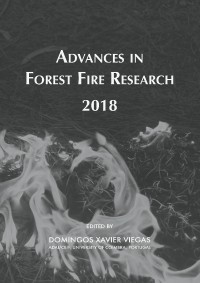Please use this identifier to cite or link to this item:
https://hdl.handle.net/10316.2/44578| DC Field | Value | Language |
|---|---|---|
| dc.contributor.author | Raposo, Jorge | |
| dc.contributor.author | Viegas, Domingos | |
| dc.contributor.author | Abouali, Abdelrahman | |
| dc.contributor.author | Rodrigues, André | |
| dc.contributor.author | Almeida, Miguel | |
| dc.contributor.author | André, Jorge | |
| dc.contributor.author | Xie, Xiaodong | |
| dc.date.accessioned | 2018-11-09T14:03:06Z | |
| dc.date.accessioned | 2020-09-06T17:31:29Z | - |
| dc.date.available | 2018-11-09T14:03:06Z | |
| dc.date.available | 2020-09-06T17:31:29Z | - |
| dc.date.issued | 2018 | - |
| dc.identifier.isbn | 978-989-26-16-506 (PDF) | |
| dc.identifier.uri | https://hdl.handle.net/10316.2/44578 | - |
| dc.description.abstract | The concept of junction fires was introduced in Viegas et al. 2012, as two approaching lines of fire, making a small angle between them. In the approach, the fires interact and induce convective flows that modifies the fire behaviour mainly its rate of spread. This process induces very strong fields of vorticity, high rates of fire spread or a large number of spot fires. Since the beginning, an exhaustive parametric study of the phenomena of the junction fires was carried out. Results from laboratory and field-scale experiments, using various fuel beds and slope angles and from large-scale fires show that the processes are similar at a wide range of scales with little dependence on the initial boundary conditions. These results correspond to a large amount of data collected. With this data, a generalization of phenomena for different conditions was made through semi-empirical models that can predict with a good agreement the sudden evolution of the rate of spread of the fire front, which results of the interaction of the fire lines, as function of the independent parameters namely time t, distance x, slope a and initial angle between the fire fronts. In addition, an effort to simulate the evolution of this kind of fires using CFD based numerical models was performed. | eng |
| dc.language.iso | eng | - |
| dc.publisher | Imprensa da Universidade de Coimbra | por |
| dc.relation.ispartof | http://hdl.handle.net/10316.2/44517 | por |
| dc.rights | open access | - |
| dc.subject | fire behaviour | eng |
| dc.subject | extreme fire behaviour | eng |
| dc.subject | dynamic fire behaviour | eng |
| dc.subject | accelerating fires | eng |
| dc.subject | merging fires | eng |
| dc.title | Modelling of junction fires with analytical and numerical analysis of the phenomena | por |
| dc.type | bookPart | por |
| uc.publication.firstPage | 549 | - |
| uc.publication.lastPage | 554 | - |
| uc.publication.location | Coimbra | por |
| dc.identifier.doi | 10.14195/978-989-26-16-506_61 | - |
| uc.publication.section | Chapter 3 - Fire Management | por |
| uc.publication.digCollection | PB | por |
| uc.publication.orderno | 61 | - |
| uc.publication.area | Ciências da Engenharia e Tecnologias | por |
| uc.publication.bookTitle | Advances in forest fire research 2018 | - |
| uc.publication.manifest | https://dl.uc.pt/json/iiif/10316.2/44578/204195/manifest?manifest=/json/iiif/10316.2/44578/204195/manifest | - |
| uc.publication.thumbnail | https://dl.uc.pt/retrieve/11058637 | - |
| uc.publication.parentItemId | 55072 | - |
| uc.itemId | 68843 | - |
| item.fulltext | With Fulltext | - |
| item.grantfulltext | open | - |
| Appears in Collections: | Advances in forest fire research 2018 | |
Files in This Item:
| File | Description | Size | Format | |
|---|---|---|---|---|
| modelling_of_junction_fires_with_analytical.pdf | 856.99 kB | Adobe PDF |  |
Items in DSpace are protected by copyright, with all rights reserved, unless otherwise indicated.
